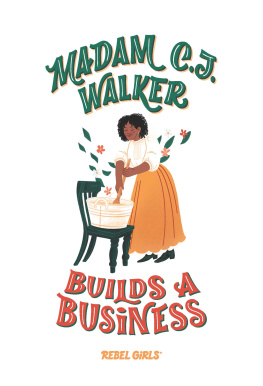
Published in 2020 by Cavendish Square Publishing, LLC
243 5th Avenue, Suite 136, New York, NY 10016
Copyright 2020 by Cavendish Square Publishing, LLC
First Edition
No part of this publication may be reproduced, stored in a retrieval system, or transmitted in any form or by any meanselectronic, mechanical, photocopying, recording, or otherwisewithout the prior permission of the copyright owner. Request for permission should be addressed to Permissions, Cavendish Square Publishing, 243 5th Avenue, Suite 136, New York, NY 10016. Tel (877) 980-4450; fax (877) 980-4454.
Website: cavendishsq.com
This publication represents the opinions and views of the author based on his or her personal experience, knowledge, and research. The information in this book serves as a general guide only. The author and publisher have used their best efforts in preparing this book and disclaim liability rising directly or indirectly from the use and application of this book.
All websites were available and accurate when this book was sent to press.
Library of Congress Cataloging-in-Publication Data
Names: Graham, P. J., 1972- author.
Title: Madam C.J. Walker : entrepreneur and self-made millionaire / PJ Graham.
Description: First Edition. | New York: Cavendish Square, [2020] | Series: Great American entrepreneurs | Audience: Grade level 9-12. | Includes bibliographical references and index.
Identifiers: LCCN 2018058453 (print) | LCCN 2019001076 (ebook) | ISBN 9781502645449 (ebook) | ISBN 9781502645432 (library bound) | ISBN 9781502645425 (pbk.)
Subjects: LCSH: Walker, C. J., Madam, 1867-1919. | African American women executives--Biography--Juvenile literature. | Cosmetics industry--United States- -History--Juvenile literature. | Entrepreneurship--Juvenile literature.
Classification: LCC HD9970.5.C672 (ebook) | LCC HD9970.5.C672 W35424 1994 (print) | DDC 338.7/66855 [B] --dc23
LC record available at https://lccn.loc.gov/2018058453
Editorial Director: David McNamara
Editor: Kristen Susienka
Copy Editor: Rebecca Rohan
Associate Art Director: Alan Sliwinski
Designer: Joe Parenteau
Production Coordinator: Karol Szymczuk
Photo Research: J8 Media
The photographs in this book are used by permission and through the courtesy of: Photo credits: Cover, p. Johnny Melton/Oklahoma Historical Society/Getty Images.
Printed in the United States of America
CONTENTS

INTRODUCTION
A Dynamic Leader for Black Women
ONE
From Jim Crow to the Harlem Renaissance
TWO
Becoming Madam Walker
THREE
Competitors and Colleagues
FOUR
The Beauty of Hair and Beyond
FIVE
Gaining Independence and Sharing Empowerment
SIX
A Thriving Legacy

This photo of Madam C.J. Walker, circa 1909, shows the entrepreneur in a stylish dress of the era.
INTRODUCTION

A Dynamic Leader for Black Women
S hes been called many thingsthe first female, black, self-made millionaire; fraudulent imitator; marketing genius; an impulsive baby; and a woman of influence. Whatever the label, Madam C.J. Walker had an unconquerable spirit that propelled her to success within the hair-care world.
More Than a Business Woman
Throughout her life, Walker did much more than succeed in business. She also overcame racism and excelled in the limited opportunities open to her in her home state of Mississippi during the post-Civil War era. Southern lawmakers passed Jim Crow laws during this time to keep black people in their place. However, Walker found her place among entrepreneurs and eventually used her skills to create a fortune for a niche industry.
Walkers greatest accomplishment and legacy stemmed from a difficult past. After losing her hair and spending two decades doing backbreaking labor, she turned to an avenue for others like her and created hair-care products for black women. Over the next several years, building up the Madam C.J. Walker Manufacturing Company, she had to convince people that her abilities were as great as her ambitions. Along the way, she lifted up other women by boosting their selfesteem or by providing them with jobs with decent earnings and helping them start their own hair salons.
Though she was often praised for her drive and marketing skill, many people opposed what she did. Some of her products, such as the Walker method or system, helped black women achieve smoother hair at a time when some black leaders believed this meant trying to act white to get ahead. Some ministers even preached against black people straightening their hair.
Walker would try to correct peoples assumptions about her products, saying her emphasis was on helping black women grow hair. Many had difficulty doing so due to a lack of understanding about hygiene, stressful lives, and poor diet. I want the great masses of my people to take a greater pride in their appearance and to give their hair proper attention, she said in 1919. I dare say that in the next ten years it will be a rare thing to see a kinky head of hair, and it will not be straight either.
As her success grew, Walker was not shy about enjoying the fruits of her labor, and her shopping trips and expensive taste were well known. If anyone doubted her interest in helping other black people, however, they only had to look at how she helped charities and at her activism. From donating to social and charity groups to using her influence to make social and legal changes for her people, she gave generously.

During Madam Walkers lifetime, black women straightening their hair with products like hers was a socially charged issue. Today, many different natural and straightened styles are common and socially acceptable.
A Short Life of Influence
Eventually, however, her business took a toll. So many speaking engagements, travel arrangements, and workdays affected her health. Doctors tried to convince her to give up running her company, but she could never rest more than a few weeks before taking up the helm again. She was not born to rest. Even upon her deathbed, Walker spoke of wanting to live to help her people.
Madam C.J. Walkers life was rather short, but in fifty-one years, she helped change the lives of black people in the United States and established a name that history remembers.

This 1895 photo shows men, women, and children picking a cotton crop, much like Madam C.J. Walker did in her childhood.
CHAPTER ONE

From Jim Crow to the Harlem Renaissance
I ts an inspiring story: a black woman born of former slaves and living in Reconstruction America becomes a self-made millionaire. Looking closer at the life of Madam C.J. Walker, as well as the opportunities that many African Americans were just starting to experience in the mid to late 1800s, its clear just how extraordinary this woman and her accomplishments were.













